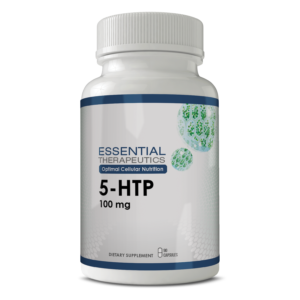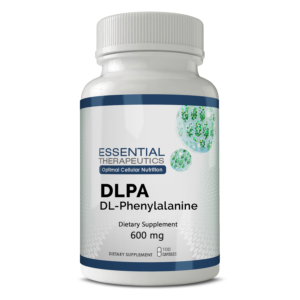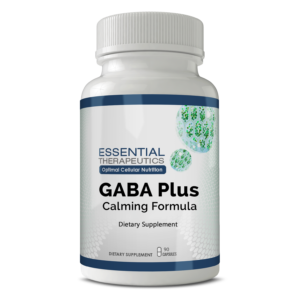Brain Function
I have found that many of you fit into certain groups depending on how you answer the following questionnaire.
 Please use this questionnaire to find the group you fit into. It will help us make decisions about the correct way to start you on your road to recovery. Let’s see which brain chemicals (neurotransmitters) you may be low in by taking this quiz.
Please use this questionnaire to find the group you fit into. It will help us make decisions about the correct way to start you on your road to recovery. Let’s see which brain chemicals (neurotransmitters) you may be low in by taking this quiz.
The “S” Group (S for Serotonin)
Please note the items which apply to your present feelings:
It’s hard for you to go to sleep.
You can’t stay asleep.
You often find yourself irritable.
Your emotions often lack rationality.
You occasionally experience unexplained tears.
Noise bothers you more than it used to. It seems louder than normal.
You “flare up” at others more easily than you used to.
You experience unprovoked anger.
You feel depressed much of the time.
You find you are more susceptible to pain.
You prefer to be left alone.
If three or more of the above apply, then read below.
The “S” Group
 Serotonin is a hypothalamus neurotransmitter which is necessary for sleep to occur. A lack of serotonin causes difficulty in getting to sleep as well as staying asleep. It is often this lack of sleep that causes the symptoms mentioned above. Serotonin levels can easily be raised by supplementing with the essential amino acid, L-Tryptophan. Dietary supplements of L-Tryptophan are banned in the United States. The natural sources of L-Tryptophan include milk, cheese, meat, ham, peanuts, and cottage cheese. All of these are very high in calories and cholesterol content. As a consequence, in order to keep your serotonin supply at a proper level, you must supplement small amounts of food sources of L-Tryptophan with the serotonin production catalysts, calcium, magnesium, and trace element, chromium. 5 Hydroxytryptophan (5HTP) a form of Tryptophan, is available over-the-counter and works extremely well for most patients.
Serotonin is a hypothalamus neurotransmitter which is necessary for sleep to occur. A lack of serotonin causes difficulty in getting to sleep as well as staying asleep. It is often this lack of sleep that causes the symptoms mentioned above. Serotonin levels can easily be raised by supplementing with the essential amino acid, L-Tryptophan. Dietary supplements of L-Tryptophan are banned in the United States. The natural sources of L-Tryptophan include milk, cheese, meat, ham, peanuts, and cottage cheese. All of these are very high in calories and cholesterol content. As a consequence, in order to keep your serotonin supply at a proper level, you must supplement small amounts of food sources of L-Tryptophan with the serotonin production catalysts, calcium, magnesium, and trace element, chromium. 5 Hydroxytryptophan (5HTP) a form of Tryptophan, is available over-the-counter and works extremely well for most patients.
Peek X Warning
5HTP is derived from plant sources and when manufactured correctly is incredibly safe. However, some manufacturers try to cut corners and in may produce batches of 5HTP with potentially harmful contaminants, including a substance known as “peak X.” Always read the label and make sure the 5HTP you’re taking is certified to be “peak X” free. Every batch of Dr. Murphree’s 5HTP is certified to be “peak X” free and says so on every bottle.
Supplementing with 5HTP
Start with taking 50mgs 30 minutes before bed. Take on an empty stomach, along with 4 ounces of juice (apple or grape). You may need to increase this dose up to 200mgs a night. If you feel hung over the next day, decrease your dose of 5HTP. Warning – a few individuals who attempt to take 5HTP at night will have an adverse reaction. Individuals with a sluggish liver (usually more pronounced in CFS) may have trouble breaking down 5HTP fast enough. Instead of making them sleepy, it revs them up and they become more mentally alert. If this happens, simply take 1-2 5HTP tablets with food 1-2 times a day and discontinue using it at bedtime on empty stomach.
The “O” Group (O for Opiods)
Do ANY of these apply to your present feelings?
Your life seems incomplete.
You feel shy with all but your close friends.
You have feelings of insecurity.
You often feel unequal to others.
When things go right you sometimes feel undeserving.
You feel something is missing in your life.
You occasionally feel a low self-worth or esteem.
You feel inadequate as a person.
You frequently feel fearful when there is nothing to fear.
If three or more of the above apply, then read below.
The “O” Group is named for the Opioid neurotransmitters contained in the Hypothalamus Gland.
These neurotransmitters have two primary functions:
1. Opioids are released in small bursts when we feel a sense of urgency (stress). Some individuals thrive on this sense of urgency. They love just meeting deadlines, racing around to get things done. They seem to feed off of this adrenaline rush.
A sense of urgency can help us get out of bed in the morning or get the kids off to school. However, if you can never turn this sense of urgency off, you’ll eventually deplete the opioids along with other vital hormones including cortisol, and DHEA.
As a way to turn off the constant mind chatter, those in the “O Group” use stimulants and mind numbing chemicals (alcohol, marijuana, food, etc.) to escape the constant pressure they place on themselves to be more, do more, have more. Type A’s are often overcome by opioid burn out. They cannot sit still. Until one day the bottom falls out and they “just can’t do it anymore.”
Alcohol and other chemicals can temporarily relieve the anxious feelings associated with opioid overload. They do so by providing artificial opioids. Unfortunately, these artificial opioids also cause the Opioid manufacturing cells in your brain to reduce their output.
In the long run these cells lose their ability to produce the needed opioid neurotransmitters. You then crave the artificial opioids and an addiction has been born.
2. When you exercise, your body causes extra quantities of the opioids to be released. This takes away the pain of sore muscles and may provide a feeling of euphoria. Long distance runners and other avid exercise enthusiast are well aware of “The High” that comes from pushing the body past its normal limits. The opioids play an important role in pain modulation.
A deficiency of opioids can lower our pain threshold. A lowered pain threshold means being more sensitive to painful stimuli.
DL-Phenylalanine (a special form of the amino acid Phenylalanine) can be extremely helpful in restoring proper opioid levels.
 Supplementing with DL- Phenylalanine (DLPA)
Supplementing with DL- Phenylalanine (DLPA)
Start with 1,000mgs, 1-2 times a day, on an empty stomach. If you don’t seem to notice any benefits, keep increasing the dose up to 4,000mgs twice a day.
If you experience a rapid heartbeat, agitation or hyperactivity, reduce or stop taking DL- Phenylalanine.
L- Glutamine increases the effectiveness of both DL and L- Phenylalanine.
Take 500mgs of L- Glutamine 1-2 times a day on an empty stomach along with the DL-Phenyalanine or L-Phenyalanine.
Both DL and L- Phenylalanine can increase blood pressure. If you already have high blood pressure, consult your doctor before taking either form of Phenylalanine.
Phenylalanine can be stimulating and shouldn’t be taken past 3 in the afternoon.
The “G” Group (G for GABA)
Please note the items which apply to your present feelings:
You often feel anxious for no reason.
You sometimes feel “free floating” anxiety.
You frequently feel “edgy” and it’s difficult to relax.
You often feel a “knot” in your stomach.
Falling asleep is sometimes difficult.
It’s hard to turn your mind off when you want to relax.
You occasionally experience feelings of panic for no reason.
You often use alcohol or other sedatives to calm down.
If three or more of the above apply, then read below.
 The “G” group symptoms are from the absence of the neurotransmitter, Gamma Amine Butyric Acid (GABA). GABA is an important neurotransmitter involved in regulating moods and mental clarity.
The “G” group symptoms are from the absence of the neurotransmitter, Gamma Amine Butyric Acid (GABA). GABA is an important neurotransmitter involved in regulating moods and mental clarity.
Tranquilizers used to treat anxiety and panic disorders work by increasing the GABA.
GABA is made from the amino acid, Glutamine. Glutamine passes across the blood-brain barrier and helps provide the necessary fuel needed for proper brain function.
A shortage of L- Glutamine can reduce IQ levels. L- Glutamine supplementation has been shown to increase IQ levels in some mentally deficient children. L- Glutamine is brain fuel. It feeds the brain cells, allowing them to fire on all cylinders. A deficiency in L- Glutamine can result in “foggy thinking” and fatigue.
Individuals with “Fibro fog” may benefit tremendously from this essential amino acid.
Even a small shortage of L- Glutamine will produce unwarranted feelings of insecurity and anxiousness. Other symptoms include continual fatigue, depression, and occasionally impotence.
Supplementing with GABA
Usually only a small dose of GABA is needed – 500 – 1,000mgs twice a day. Some individuals may need to take GABA 3-4 times a day. Like most amino acids, GABA needs to be taken on an empty stomach.
The “D” Group (D for Dopamine)
Please note the items which apply to your present feelings:
You lack pleasure in life.
You feel there are no real rewards in life.
You have unexplained lack of concern for others, even loved ones.
You experience decreased parental feelings.
Life seems less “colorful” or “flavorful.”
Things that used to be “fun” aren’t any longer enjoyable.
You have become a less spiritual or socially concerned person.
If three or more of the above apply then read below.
The “D” Group
Dopamine is a neurotransmitter associated with the enjoyment of life, food, arts, nature, your family, friends, hobbies, and other pleasures. The popularity of cocaine (or chocolate) stems from the fact that it causes very high levels of dopamine to be released in a sudden rush.
This creates a euphoric state. A dopamine deficiency can lead to a condition known as anhedonia.
Anhedonia is the lack of ability to feel any pleasure or remorse in life (lifeless). It also reduces the person’s attention span. For example, a person who has taken cocaine for some time will have used up most of his or her dopamine supply.
Their attention span is often reduced to 2 to 3 minutes instead of the usual 50 to 60 minutes. Learning, for such a person, is nearly impossible.
Brain fatigue, confusion, and lethargy are all byproducts of low dopamine. The brain cells which “manufacture” dopamine use the amino acid L-Phenylalanine as the raw material. Like most cells in the hypothalamus, they have the ability to produce 4 or 5 times their usual output if larger quantities of the raw materials (amino acids and their co-factors) are made available through nutritional supplementation.
Supplementing with L-Phenylalanine
Start with 1,000mgs, twice a day, taken on an empty stomach. If needed, increase up to 4,000mgs twice a day.
If you experience a rapid heartbeat, agitation, or hyperactivity, reduce or stop taking L-Phenylalanine.
L-glutamine increases the effectiveness of both DL and L- Phenylalanine.
Take 500mgs of L-Glutamine, 1-2 times a day, on an empty stomach.
Both DL and L-Phenylalanine can increase blood pressure. If you already have high blood pressure, consult your doctor before taking either form of phenylalanine. Phenylalanine can be stimulating and shouldn’t be taken past 3 in the afternoon.
The “N” Group (N for Norepinephrine)
Please note the items which apply to your present feelings:
You suffer from a lack of energy.
You often find it difficult to “get going.”
You suffer From decreased drive.
You often start projects and then don’t finish them.
You frequently feel a need to sleep or “hibernate.”
You feel depressed a good deal of the time.
You occasionally feel paranoid.
Your survival seems threatened.
You are bored a great deal of the time.
If three or more of the above apply, then read below.
The “N” Group
The neurotransmitter Norepinephrine, when released in the brain, causes feelings of arousal, energy, and drive. On the other hand, a short supply of it will cause feelings of a lack of ambition, drive, and or energy.
It can even cause depression, paranoia, and feelings of apathy. Norepinephrine is also used to initiate the “flow” of adrenaline when you are under psychological stress. People under a great load of stress, or a continual stress loading of almost any size, often find their Norepinephrine levels to be too low.
This is most frequently detected by the “feelings” listed in the questionnaire you have just taken. The production of Norepinephrine in the hypothalamus is a 2-step process. The amino acid, L- Phenylalanine, is first converted into Tyrosine.
The amino acid, Tyrosine, is then converted into Norepinephrine. In extreme cases L-Tyrosine is supplemented to increase Norepinephrine and Dopamine. However, if the levels of Tyrosine are not low, this can cause headaches. This is why I usually recommend L- Phenylalanine replacement therapy first.
Supplementing with L-Phenylalanine
Start with 1,000mgs, twice a day, taken on an empty stomach. If needed, increase up to 4,000mgs twice a day. If you experience a rapid heartbeat, agitation, or hyperactivity – reduce or stop taking L- phenylalanine.
L-glutamine increases the effectiveness of both DL and L- phenylalanine.
Take 500mgs of L-glutamine 1-2 times a day, on an empty stomach.
Both DL and L-phenylalanine can increase blood pressure.
If you already have high blood pressure, consult your doctor before taking either form of phenylalanine.
Phenylalanine can be stimulating and shouldn’t be taken past 3 in the afternoon.
Update – There’s an option to L-Phenylalanine
 I’ve started recommending SAMe instead of L-Phenylalanine because of positive recent studies. S-Adenosyl-methionine (SAMe)- is involved in regulating the brain’s neurotransmitters. Normally the brain manufactures all the SAMe it needs from the amino acid methionine. However, low protein diets, malabsorption and deficiencies developed from excess methionine use in certain detoxification pathways can create a need for SAMe replacement. SAMe has been shown through several recent, well designed, studies to be one of the best natural antidepressants available.
I’ve started recommending SAMe instead of L-Phenylalanine because of positive recent studies. S-Adenosyl-methionine (SAMe)- is involved in regulating the brain’s neurotransmitters. Normally the brain manufactures all the SAMe it needs from the amino acid methionine. However, low protein diets, malabsorption and deficiencies developed from excess methionine use in certain detoxification pathways can create a need for SAMe replacement. SAMe has been shown through several recent, well designed, studies to be one of the best natural antidepressants available.
SAMe helps boost serotonin and epinephrine levels. It also helps increase the production of endorphins. Endorphins are the body’s natural pain blocking chemicals and are more powerful than morphine. Because it produces quick results, SAMe has been used to hasten the onset of action of the antidepressant imipramine.
SAMe Helps Boost the Effects of Antidepressants
Prescription antidepressants fail to work for fifty percent of those take them. One way to boost the beneficial effects of antidepressant medications is to take them with SAMe (S-adenosyl-L-methionine). Research has already shown that SAMe increases both serotonin and noriepinephrine levels (brain chemicals) and is a potent antidepressant by itself. Now researchers have shown that combining SAMe with prescription antidepressants rreduces the failure rate by 43%.
SAMe has become one of my favorite nutritional supplement. I’m using it more and more in my practice for depression, fatigue, and pain disorders. SAMe elevates endorphin levels.
SAMe and Fibromyalgia
Studies involving FMS patients and SAMe have shown dramatic improvements in pain reduction. *One study showed that individuals taking SAMe for a period of 6 weeks had an improvement of 40% in pain reduction and 35% improvement in their depression! (Grassetto & Varotto, 1994, pp. 797-806).
Jaccobsen S, Danneskiold – Samose B, Anderson RB. Oral s-adenosyl-L-methionine in primary fibromyalgia. Double-blind clinical evaluation. Scandinavian Journal of Rheum 20(4): 294-302, 1991.
Supplementing with SAMe
Start with 200mg-400mg taken on an empty stomach in the morning. You can go up to a maximum 1200mg day. Don’t take late in the day. Not everyone will need to take the maximum dose. Take a good optimal daily allowance multivitamin/mineral formula like CFS/Fibro Formula (or something similar) and I also recommend taking adrenal cortex supplements.







